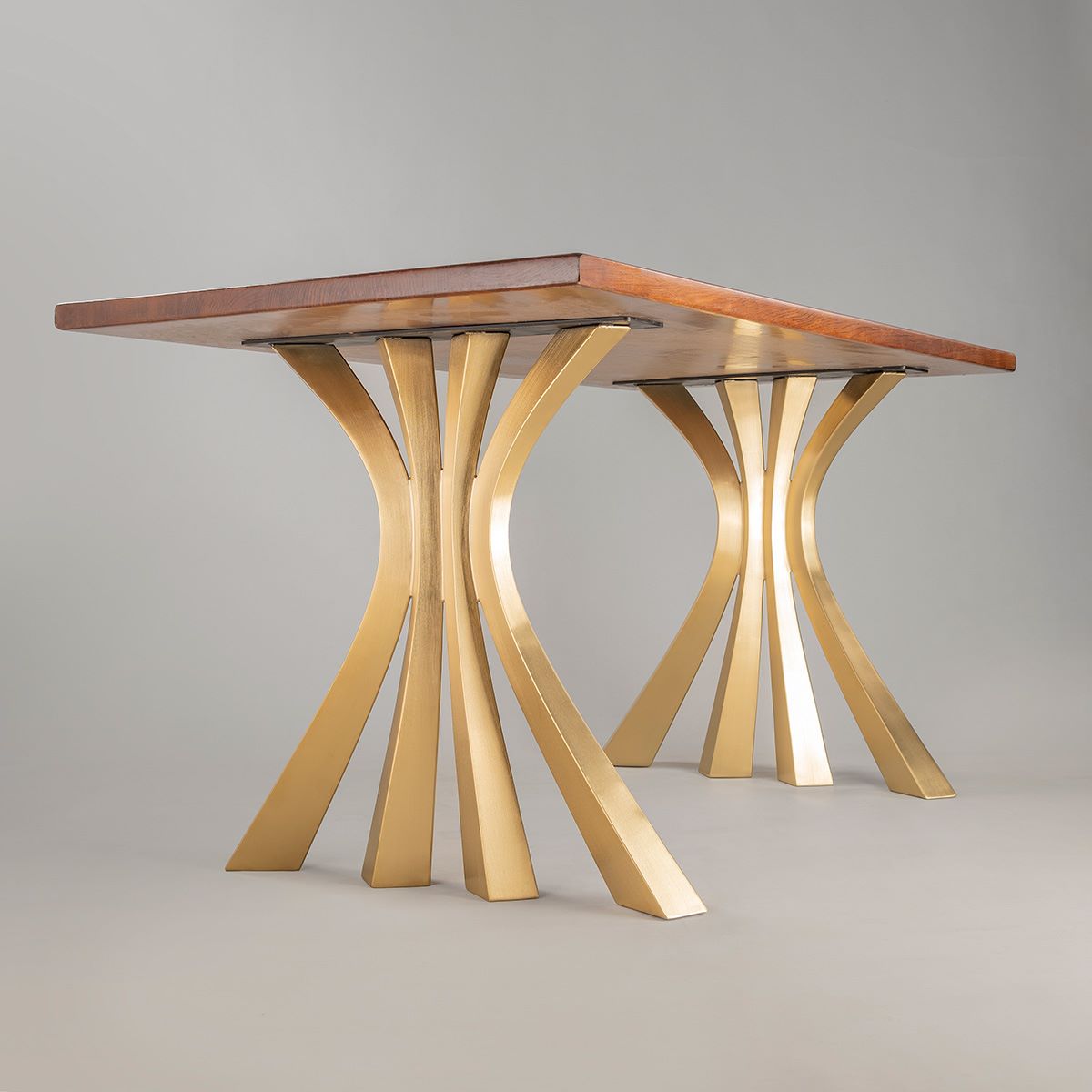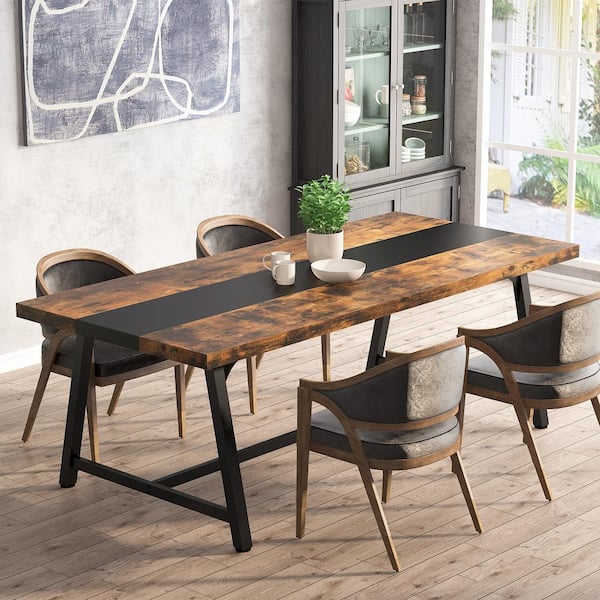Enhance Your Eating Experience with Timeless Dining Table Legs Wood
Enhance Your Eating Experience with Timeless Dining Table Legs Wood
Blog Article
Discovering the Different Kinds Of Dining Table Legs Timber for Your Eating Room
The selection of dining table legs wood can profoundly influence both the practical and visual qualities of your eating space. Solid timber options, such as oak and walnut, give a timeless appearance with unequaled durability, while crafted wood choices provide innovative styles that mimic the richness of natural grains. In addition, the expanding pattern of reclaimed wood introduces a sustainable element that interest eco mindful consumers. As we explore these numerous choices, it becomes important to think about not just the aesthetic allure but likewise the sensible effects of each product option. What elements should direct your decision?
Strong Timber Options

In addition, solid wood is renowned for its stamina and long life. Unlike crafted materials, strong wood is less susceptible to warping and damage in time when appropriately kept. This makes it an optimal selection for family members or those who regularly organize celebrations. Each item of strong timber is one-of-a-kind, showcasing specific characteristics that include in the appeal and character of the table.
Furthermore, solid wood can be finished in numerous ways, varying from all-natural oils to tarnished coatings, permitting homeowners to personalize their furniture to match their design. In recap, picking solid wood for eating table legs not just guarantees structural integrity but likewise enhances the visual appeal of the dining area, making it a worthwhile financial investment for any home.
Engineered Timber Alternatives

Plywood, built from multiple layers of timber veneer, is stable and specifically strong, making it an exceptional option for eating table legs. Its layered make-up permits it to withstand changes in humidity and temperature level far better than standard solid wood. MDF, on the other hand, supplies a smooth surface area for paint or veneering, enabling designers to accomplish a polished look while preserving architectural integrity.
Particleboard, frequently utilized in budget-friendly options, supplies decent toughness and is lightweight, making it much easier to manage. However, it might not be as durable as plywood or MDF. When choosing crafted wood alternatives, it is vital to think about the desired usage and preferred visual. These materials not only improve the functionality of dining spaces but additionally enable greater style flexibility, making sure that standard and modern designs can exist together sympathetically.
Reclaimed Timber Features
Reclaimed timber provides an unique mix of sustainability and character, making it a significantly prominent selection for dining table legs. Sourced from old barns, manufacturing facilities, and various other frameworks, reclaimed timber embodies a history that brand-new materials merely can not reproduce. Each piece carries its very own story, noted by distinctive blemishes, knots, and varying grain patterns, which add to a table's distinct aesthetic charm.
In addition to its aesthetic beauty, reclaimed wood is an eco-friendly option. By repurposing previously made use of materials, it decreases the need for brand-new lumber, thus helping to preserve forests and minimize waste. This straightens with a growing customer preference for lasting methods in furnishings.
Additionally, redeemed wood is typically more durable than newly collected timber due to its age. The all-natural drying procedure that reclaimed timber undergoes outcomes in a denser and stronger material, making it much less susceptible to bending and splitting. This enhances the durability of eating tables, enabling them to withstand the rigors of day-to-day use.
Softwood vs. Wood
When selecting dining table legs, understanding the distinctions between softwood and wood is vital for achieving both aesthetic and functional goals. Softwoods, acquired from coniferous trees, such as want and cedar, are identified by their lighter weight and ease of adjustment. They commonly exhibit a more rustic appearance, making them suitable for laid-back or country-style dining spaces. Softwoods are usually less sturdy than hardwoods, which can be a factor to consider for family members or those seeking longevity in their furnishings.
On the various other hand, hardwoods, sourced from deciduous trees like cherry, maple, and oak, are renowned for their thickness, toughness, and longevity. The complex grain patterns and rich tones of hardwoods provide a timeless and innovative allure, making them ideal for official eating settings. While hardwoods tend to be extra pricey and larger, their durability against wear and tear frequently justifies the investment.
Inevitably, the selection in between softwood and wood for dining table legs ought to straighten with your style vision, use requirements, and budget plan, ensuring that your eating space shows your individual design while continuing to be useful over time.

Coatings and Treatments
The aesthetic allure and durability of eating table legs can be substantially boosted via different finishes and therapies. These procedures not just shield the wood from damage yet likewise boost its appearance, enabling it to match varied indoor styles.
One common treatment is tarnishing, which permeates the wood and enhances its all-natural grain while including color. Stains provide an abundant, classy appearance, allowing property owners to match their furniture with existing style. Alternatively, clear surfaces such as polyurethane or varnish create a safety layer without changing the timber's initial hue, ensuring sturdiness against damage.
Furthermore, natural oils, like tung or linseed oil, nurture the wood and supply a subtle luster, all find more info while being green. These oils enable the surface to take a breath, preventing dampness buildup and possible warping.
For those looking for a rustic charm, troubled or weathered surfaces can be put on produce an aged appearance, adding character to the item. Ultimately, the choice of therapies and surfaces depends on personal choice, desired aesthetic appeals, and the specific timber kind, making it vital to consider these elements when picking table legs for your area.
Verdict
In final thought, the option of dining table leg materials substantially affects browse around here both the aesthetic and practical aspects of an eating room. Strong woods, engineered options, and redeemed alternatives each offer unique benefits, satisfying numerous choices and needs. Comprehending the distinctions in between woods and softwoods, along with suitable surfaces and therapies, permits educated decision-making. Ultimately, the choice of wood type ought to line up with wanted design, durability, and environmental factors to consider, enhancing the general dining experience.
The selection of eating table legs wood can profoundly impact both the aesthetic and functional top qualities of your dining space - Dining Table Legs Wood. see here now Solid timber choices, such as oak and walnut, supply a traditional look with unrivaled sturdiness, while engineered wood choices supply cutting-edge layouts that imitate the richness of natural grains. Strong wood uses an ageless quality that can elevate the overall layout of an eating room. Each piece of strong timber is distinct, showcasing individual attributes that add to the charm and personality of the dining table
Furthermore, redeemed timber is typically extra sturdy than recently gathered wood due to its age.
Report this page